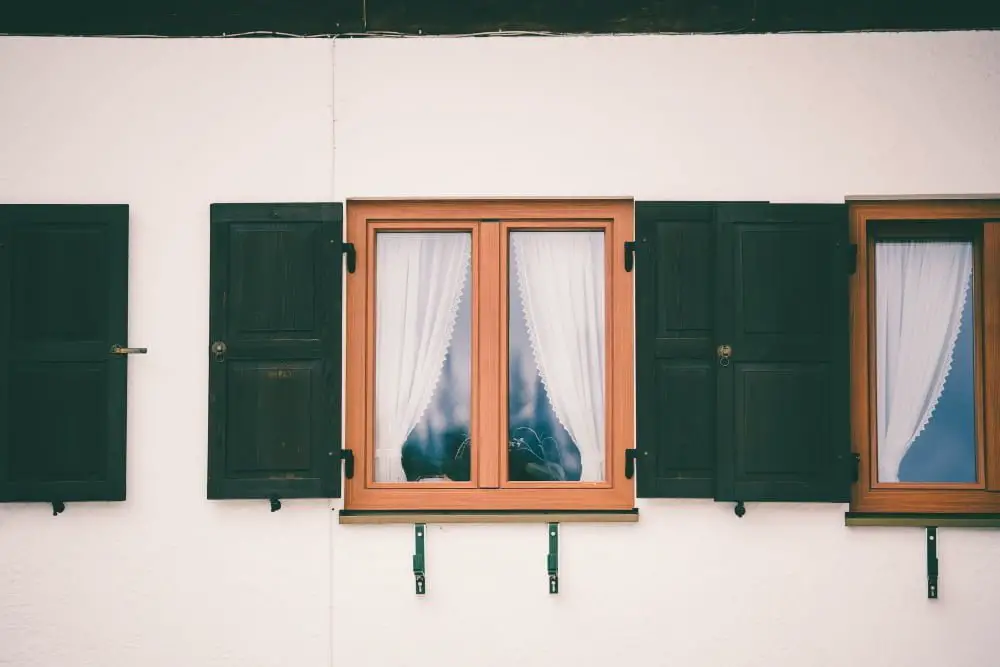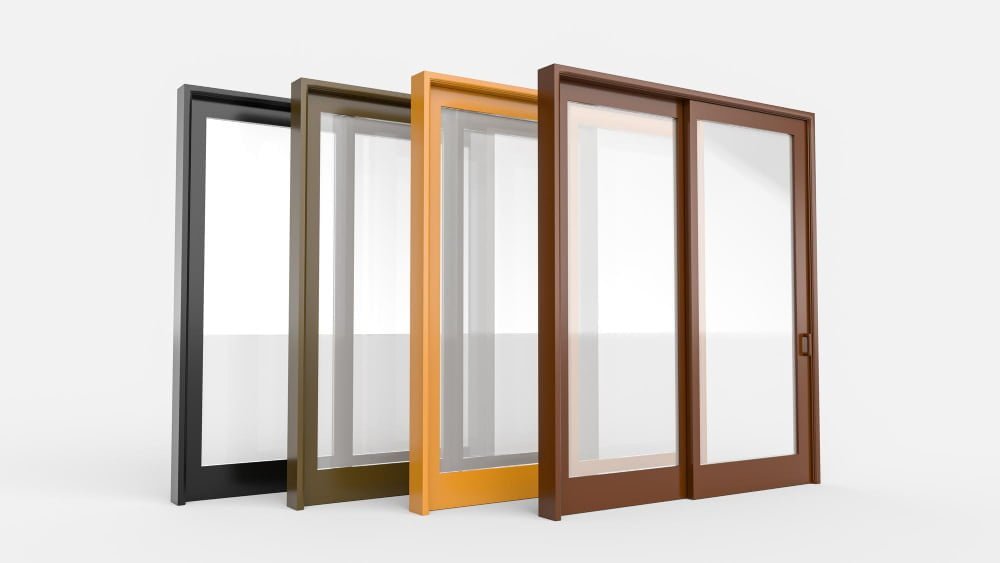In this blog post, discover how to preserve the charm of your historic home while also improving its energy efficiency with modern windows.
As I walked through the quaint, historic neighborhood of my hometown, I couldn’t help but admire the gorgeous Victorian homes with their ornate details and elegant charm. These homes had stood the test of time and witnessed generations come and go.
However, as much as I loved their timeless beauty, I couldn’t ignore the fact that many of them were in dire need of an energy-efficient upgrade.
As a window expert, it’s my passion to help homeowners preserve their home’s character while also improving its efficiency. And when it comes to historic homes, finding that balance can be a challenge.
But fear not! With my years of experience in the industry and expertise on energy-efficient windows for historic homes, I’m here to guide you through this process.
So sit back and join me on this journey as we explore how to preserve your home’s charm while also increasing its efficiency with energy-efficient windows – because who says you can’t have both?
Historic Homes: Balancing Charm & Efficiency

Historic homes are a treasure trove of architectural beauty and cultural significance. They tell stories of the past, evoke nostalgia, and offer a glimpse into our heritage.
However, they also come with their own set of challenges when it comes to energy efficiency. As I walked through the neighborhood admiring these beautiful homes, I couldn’t help but notice how many had old single-pane windows that were not only inefficient but also detracted from their charm.
Many homeowners face this dilemma – how do you balance preserving your home’s character while improving its energy efficiency? The answer lies in finding the right window solution that meets both needs without compromising on either one. With advancements in technology and design options available today for historic homes’ windows, there is no reason why you can’t have both charm and efficiency.
Energy-Efficient Window Options

When it comes to energy-efficient windows for historic homes, there are several options available that can help preserve the charm of your home while also increasing its efficiency. One popular option is double-pane windows with low-emissivity (low-e) glass.
These types of windows have two panes of glass with a layer of gas in between them, which helps reduce heat transfer and improve insulation. Another option is triple-pane windows, which offer even more insulation than double-pane ones.
However, they may not be suitable for all historic homes due to their thickness and weight. For those who want to maintain the original look and feel of their home’s single-paned windows but still want improved efficiency, storm window inserts or exterior storms can be added as an extra layer over existing single-paned units.
No matter what type you choose though – whether it’s double pane or triple pane – make sure that they meet Energy Star requirements so you know you’re getting a product that will truly save on energy costs.
As I walked through my hometown admiring these beautiful Victorian homes once again after learning about these options from my experience in the industry; I couldn’t help but think how much easier this process would have been if homeowners had access to this information earlier on! But now we know better – let’s preserve our charming historical houses without sacrificing comfort!
Retrofitting vs. Replacement Windows

When it comes to upgrading the windows in a historic home, homeowners are often faced with the decision of retrofitting or replacing their existing windows. Retrofitting involves adding weatherstripping and other energy-saving features to your current windows, while replacement means removing old windows and installing new ones that meet modern energy efficiency standards.
While retrofitting may seem like an easier option, it’s important to note that not all older window frames can accommodate these upgrades. In some cases, replacement may be necessary for optimal energy savings.
But don’t let this deter you from preserving your home’s charm! There are many options available for replacement windows that mimic the look of traditional wood-framed or divided-light style panes while still providing superior insulation and durability.
At the end of the day, whether you choose retrofitting or replacement will depend on factors such as budget and personal preference. But with careful consideration and expert guidance from a trusted window professional like myself, you can find a solution that balances both preservation of charm and increased efficiency – ensuring your historic home continues to stand strong for generations to come.
Preserving Architectural Integrity

When it comes to historic homes, preserving their architectural integrity is crucial. These homes are not just buildings; they’re a piece of history that tells a story about the past.
That’s why when considering energy-efficient windows for your historic home, it’s essential to choose options that complement its unique style and character.
One way to preserve your home’s architectural integrity is by selecting window frames made from materials like wood or fiberglass instead of vinyl. While vinyl may be more affordable and low-maintenance, it can look out of place on an older home with traditional architecture.
Another option is choosing custom-made windows designed specifically for your home’s unique features. This ensures that the new windows fit seamlessly into the existing structure without compromising its original design.
Preserving architectural integrity doesn’t mean sacrificing efficiency either! Energy-efficient glass options such as double-paned or Low-E coatings can help reduce energy costs while still maintaining the charm and beauty of your historic home.
By taking these steps towards preserving architectural integrity while also improving efficiency with energy-efficient windows, you’ll be able to enjoy all the benefits modern technology has to offer without losing any of what makes your house special – its history and character!
Glazing Techniques for Efficiency

One of the most important factors to consider when upgrading your historic home’s windows is the glazing technique. Glazing refers to the glass panes used in a window, and it plays a crucial role in determining its energy efficiency.
As I continued my walk through the historic neighborhood, I noticed that many of these homes still had their original single-pane windows. While they may have been charming, they were also incredibly inefficient at keeping out drafts and regulating temperature.
To improve energy efficiency without sacrificing charm, homeowners can opt for double or even triple-pane glazing techniques. These types of windows use multiple layers of glass with insulating gas between them to reduce heat transfer and increase insulation.
Another option is low-emissivity (low-e) coatings on window panes which reflect infrared light while allowing visible light to pass through – this helps keep your home cool during summer months while retaining warmth during winter months.
By choosing an appropriate glazing technique for your historic home’s new windows you can preserve its character while improving its overall energy efficiency – making it more comfortable year-round!
Insulation and Weatherstripping Solutions

One of the biggest challenges when it comes to energy-efficient windows for historic homes is finding a solution that doesn’t compromise the home’s charm. Fortunately, several insulation and weatherstripping solutions are available that can help improve your home’s efficiency without sacrificing its character.
One option is to use low-expansion foam insulation around the window frame. This type of insulation expands slowly, allowing you to control how much you use and preventing any damage or distortion to your window frames.
Another solution is weatherstripping. Weatherstripping involves sealing gaps between moving parts of a window or door with materials like felt, vinyl, or metal strips.
This helps prevent drafts from entering your home while also reducing noise pollution.
When choosing an insulation or weatherstripping solution for your historic home’s windows, it’s important to work with an experienced professional who understands both modern energy-efficiency standards and historical preservation requirements. By taking these steps towards improving energy efficiency in older homes we can preserve their beauty while making them more comfortable places in which we live!
Window Film Applications

Another common concern when it comes to upgrading windows in historic homes is preserving their original appearance. Fortunately, there are several options available that can help maintain the charm and character of your home while also improving its energy efficiency.
One such option is window film applications. These films are designed to be applied directly onto existing windows, providing an extra layer of insulation without altering their appearance.
They come in a variety of styles and shades, from clear to tinted or frosted finishes. Window film applications not only improve energy efficiency by reducing heat transfer through the glass but also offer additional benefits such as UV protection for furniture and flooring inside your home.
However, it’s important to note that window films may not be suitable for all types of historic windows or buildings with strict preservation guidelines. It’s always best to consult with a professional before making any changes that could potentially harm the integrity or value of your home.
Related Stories
- Reducing Heating and Cooling Costs with Energy-efficient Windows: A Smart Investment
- Energy-efficient Window Upgrades: Boosting Your Home’s Performance
- Case Studies of Energy-efficient Window Projects: Success Stories to Inspire
- Energy-efficient Windows and Indoor Air Quality: Breathe Easier in Your Home
- Best Energy-efficient Windows: Top Picks for a Greener Home
Recap
